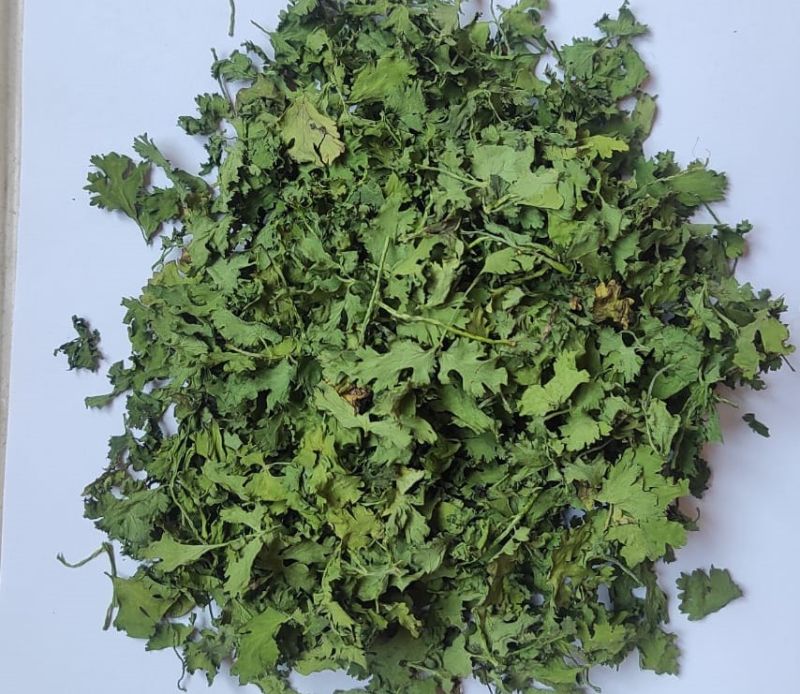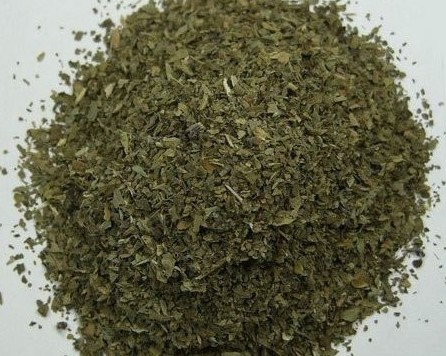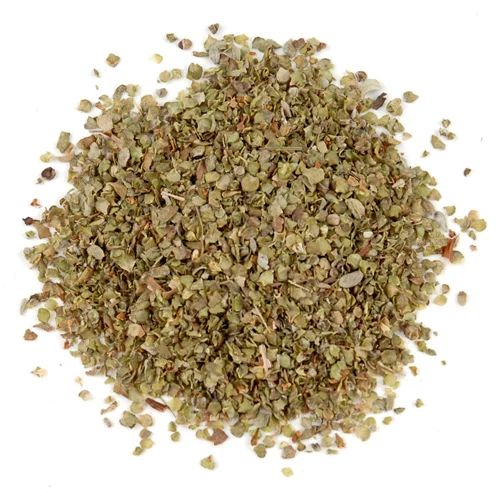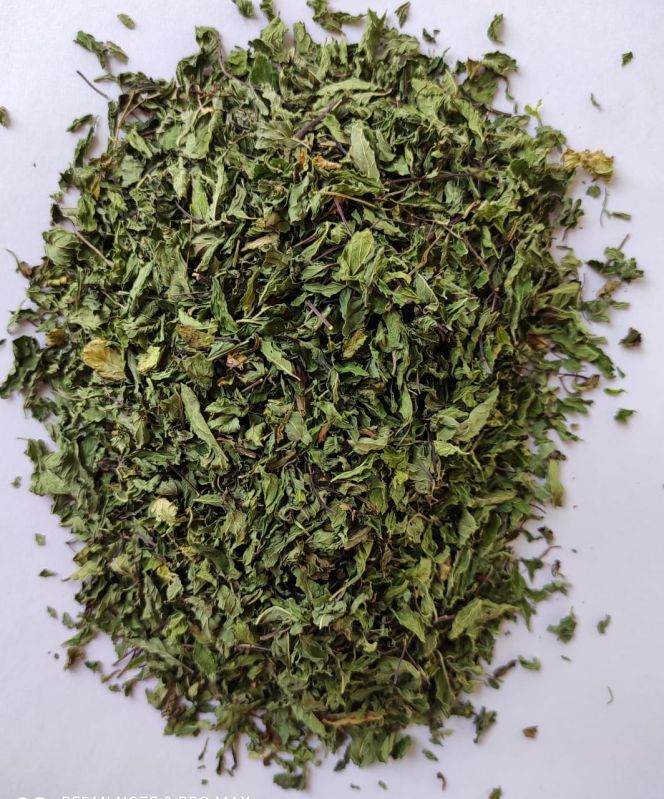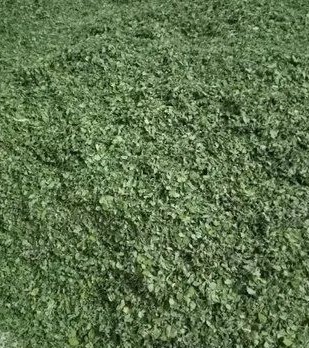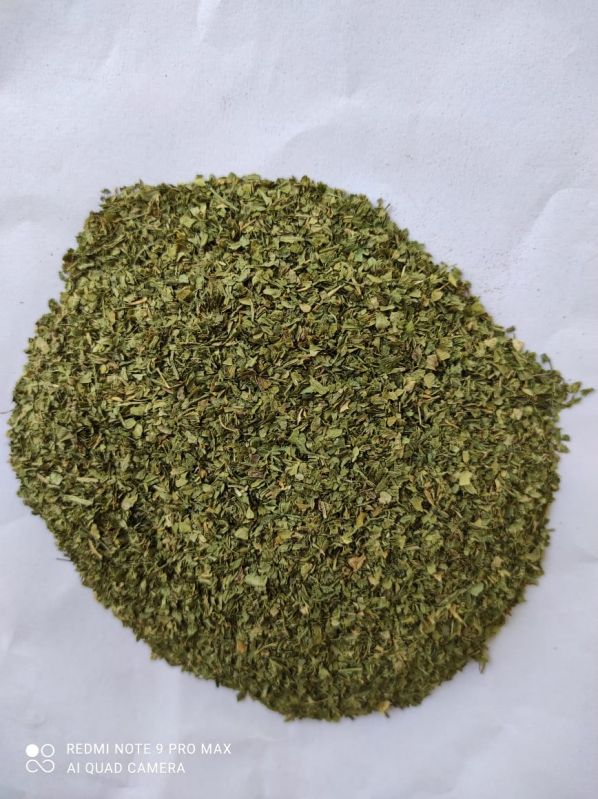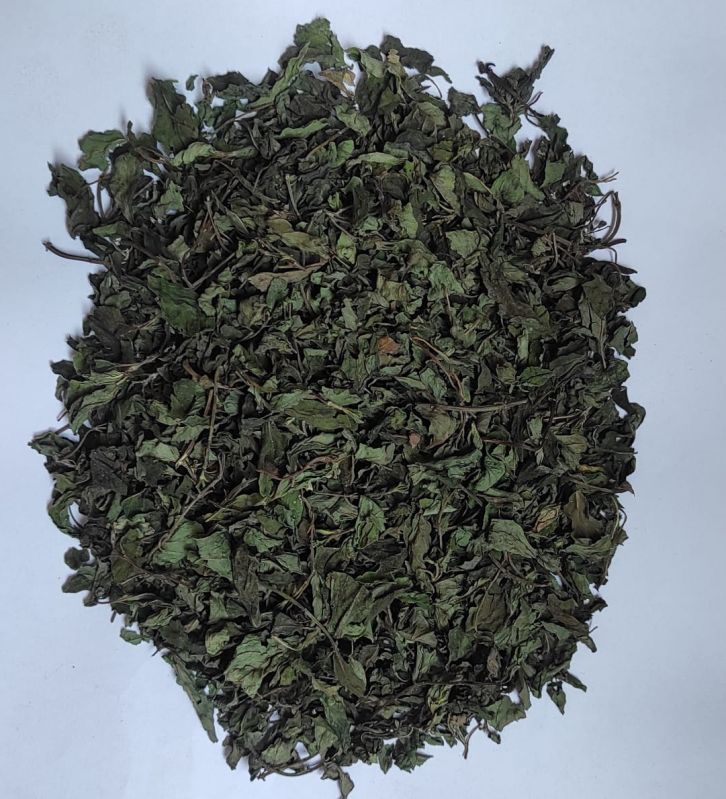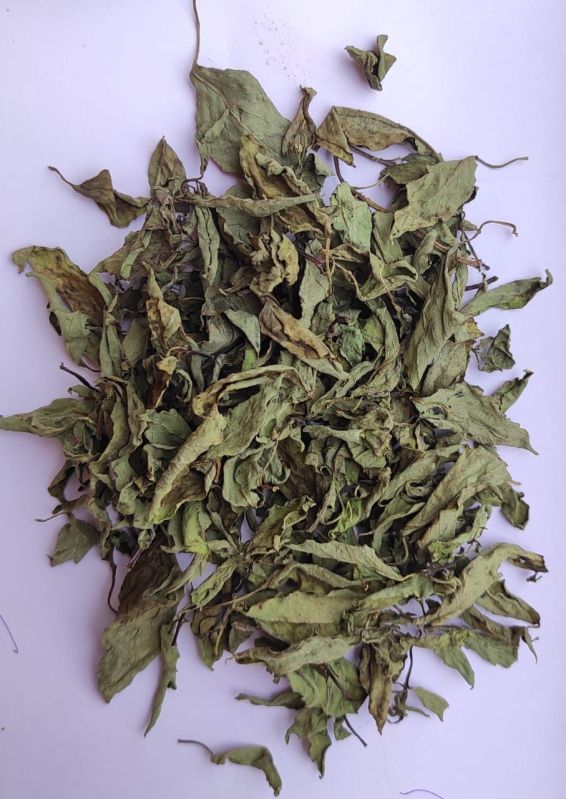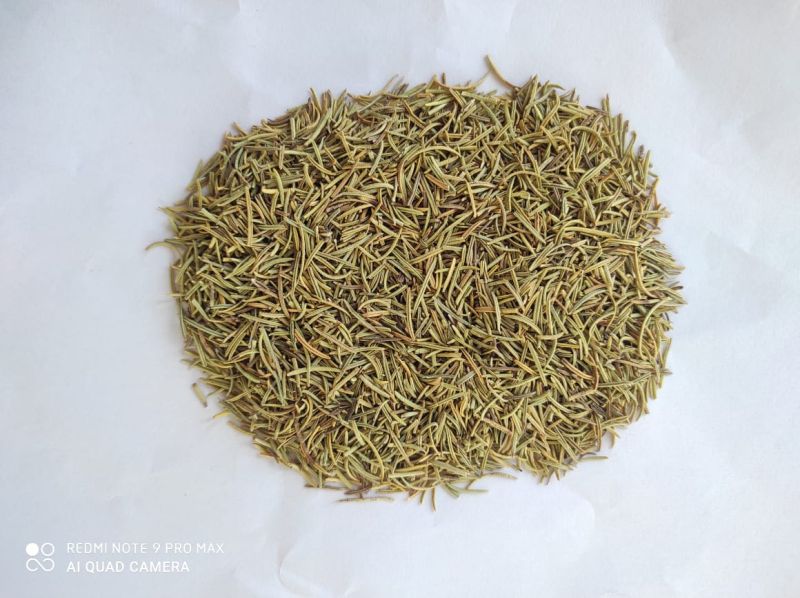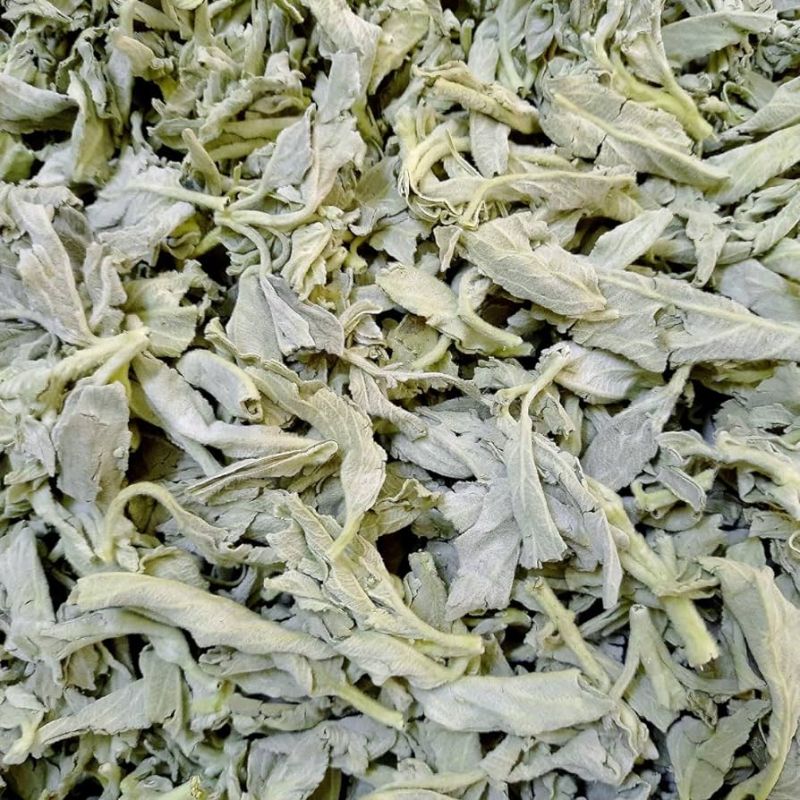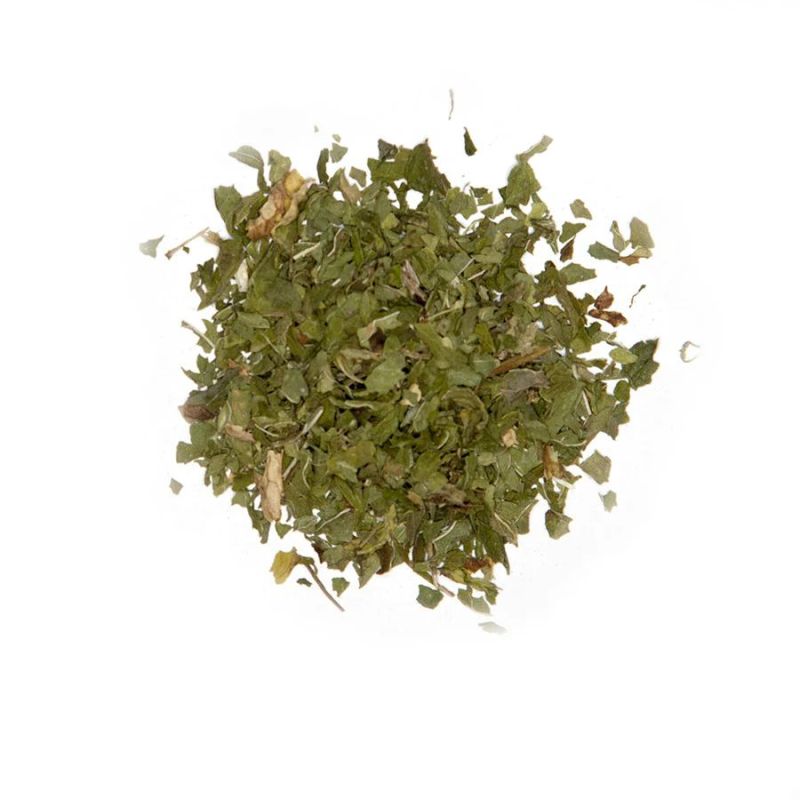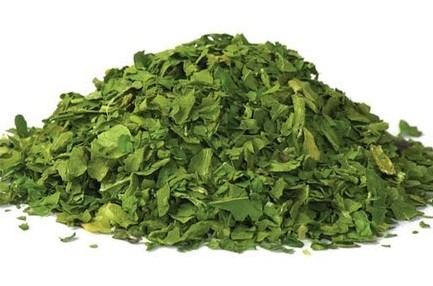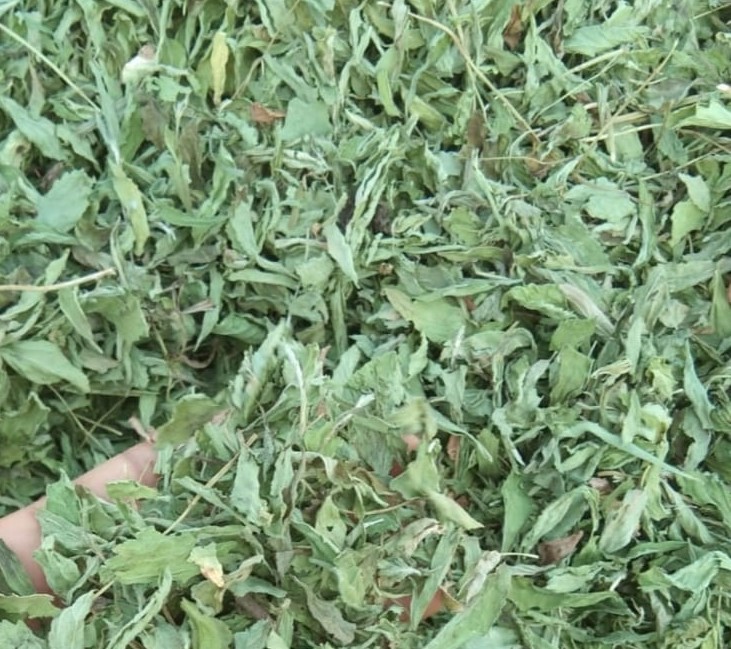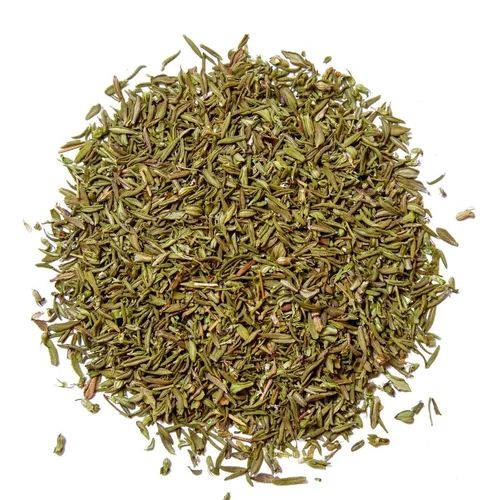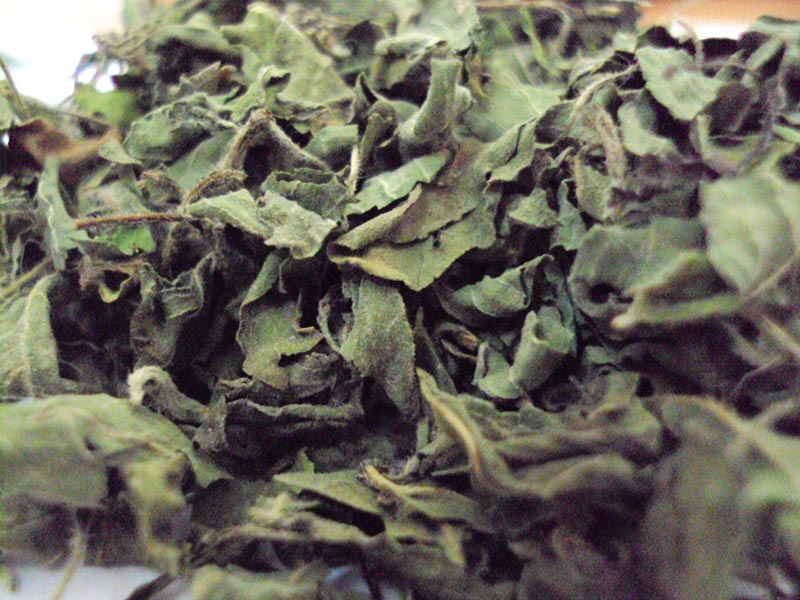- Vadodara, Gujarat
- GST NO. : 24AAHCP2064R1ZZ
- +91-8000177899, +91-9373241098
Dried Herbs
Leading Wholesaler, Trader and Manufacturers of Dried Coriander Leaves, Dried Holy Basil Leaves, Dried Marjoram Leaves, Dried Mint Leaves, Dried Moringa Leaves, Dried Oregano Leaves, Dried Peppermint Leaves, Dried Rama Tulsi Leave, Dried Rosemary Leaves, Dried Sage Leaves, Dried Spearmint Leaves, Dried Spinach Leaves, Dried Stevia Leaves, Dried Thyme Leaves and Dried Tulsi Leaves from Vadodara.
MOQ : 50 Kilogram
| Business Type | Manufacturer, Supplier, Trader |
| Organic Type | Organic |
| Color | Green |
| Application | Cooking |
| Purity | 99.9% |
| Packaging Type | PP Bag |
| Packaging Size | 25 Kg |
| Type | Dried Coriander Leaves |
| Shelf Life | 6 Month |
| Country of Origin | Made In India |
| Forms | Also Available in Powder & Granules |
Preferred Buyer From
| Location | Anywhere in India |
MOQ : 50 Piece
| Business Type | Manufacturer, Supplier, Trader |
| Cultivation Type | Organic |
| Color | Green |
| Condition | Dried |
| Feature | Nutrient Richness, Quality, Reliable Performance, Safe Usage High |
| Packaging Type | Pp Bag |
| Type | Holy Basil Leaves |
| Part | Leaves |
| Country of Origin | India |
| Forms | Also Available in Powder & Granules |
Preferred Buyer From
| Location | Anywhere in India |
Holy Basil
Botanical name: Ocimum basilicum
Ocimum basilicum, also known as Holy Basil, tulsi, is an aromatic plant in the family Lamiaceae. It is considered a sacred plant by the Hindus and is often planted around Hindu shrines. The Hindu name for holy basil, Tulsi, means "the incomparable one." The variety of Ocimum basilicum used in Thai cuisine is referred to as Thai holy basil. Tulsi has been used for thousands of years in Ayurveda for its diverse healing properties. It is not to be confused with Thai basil which is a variety of Ocimum basilicum.
Benefits and uses:
Holy basil is used for the common cold, influenza H1N1 (swine) flu, diabetes, asthma, bronchitis, earache, headache, stomach upset, heart disease, fever, viral hepatitis, malaria, stress, and tuberculosis.
It is also used for mercury poisoning, to promote longevity, as a mosquito repellent, and to counteract snake and scorpion bites.
The leaves strengthen the stomach and induce copious perspiration. The seed of the plant are mucilaginous.
Holy Basil is extremely effective in curing nearly all types of respiratory disorders, including chronic and acute bronchitis. It is an important constituent of many Ayurvedic cough syrups and expectorants. It helps to mobilize mucus in bronchitis and asthma.
Basil has strengthening effect on the kidney. In case of renal stone the juice of basil leaves and honey are useful.
Basil has a beneficial effect in cardiac disease and the weakness resulting from them. It reduces the level of blood cholesterol. Basil leaves are regarded as an 'adaptogen' or anti-stress agent. Basil juice is an effective remedy for sore eyes and night-blindness, which is generally caused by deficiency of vitamin A.
Applied locally, basil juice is beneficial in the treatment of ringworm and other skin diseases.
The leaf extract is effective in checking the spread of the fungal pathogens Pyricularia oryzae and Rhizoctonia solani, which cause blast disease and sheath blight disease of rice.
Antibacterial activity and deterrent against the larvae of root knot nematode (Meloidogyne incognita) have been reported, and the oil is a mosquito repellent.
The ethanol extract (90%) of the leaves also showed hepatoprotective effect against paracetamol-induced liver damage.
Oral administration of the alcoholic extract of the leaves lowers blood sugar level in normal
MOQ : 50 Kilogram
| Business Type | Manufacturer, Supplier, Trader |
| Cultivation Type | Organic |
| Color | Green |
| Form | Leaf |
| Packaging Size | 25 Kg |
| Packaging Type | Pp Bags |
| Feature | No Preservative Added, Non Harmful |
| Purity | 100% |
| Style | Dried |
| Drying Process | Sun Dry |
| Shelf Life | 2 Years |
| Country of Origin | India |
| Forms | Also Available in Powder & Granules |
Preferred Buyer From
| Location | Anywhere in India |
MOQ : 50 Kilogram
| Business Type | Manufacturer, Supplier, Trader |
| Cultivation Type | Organic |
| Color | Green |
| Feature | Fresh, High Nutrition, Hygenically Packed, Pure |
| Packaging Type | Pp Bag |
| Type | Dried Mint Leaves |
| Shelf Life | 18 Month |
| Part | Mint Leaves |
| Country of Origin | India |
| Forms | Also Available in Powder & Granules |
| Payment Terms | L/C |
| Delivery Time | 1 week |
Preferred Buyer From
| Location | Anywhere in India |
Mint
Botanical name: Mentha
Mentha also known as Mint or pudina is a genus of flowering plants in the family lamiaceae. The name is derived from the Greek word 'mentha'. Mints are aromatic, almost exclusively perennial, rarely annual, herbs. It is mainly known for its distinct aroma. Presence of menthol gives mint its characteristic flavor. With its different aroma, pleasing flavor, cool sensation and medicinal qualities, mint is among the most resourceful plants in the herbal kingdom.
Benefits and uses:
Mint was originally used as a medicinal herb to treat stomach ache and chest pains, and it is commonly used in the form of tea as a home remedy to help alleviate stomach pain. The menthol in peppermint soothes the lining of the digestive tract and stimulates the production of bile, which is an essential digestive fluid.
Plant pacifies vitiated kapha, vata, amennorrhoea, dysmenorrhea, dental caries, jaundice and urinary retention. It is rich in many chemicals, vitamins and minerals such as Niacin, Carotene, Folic Acid, Thiamine, Riboflavin, Magnesium, Calcium, Phosphorus, Iron, Magnesium, Copper, Manganese, and Zinc and so on.
The plant possesses carminative, antibacterial, antifibrile, a stimulative, stomachic, diaphoretic and antispasmodic property that enhances the medicinal value of pudina to a large extent. Decoction of mint leaves relieves from any worm infestation. Application of its oil on skin helps in reducing blemishes on the skin. The leaves are helpful in stimulating menstruation in those suffering from dysmenorrhea. The strong, sharp flavor and scent of mint is used as a mild decongestant for illnesses such as the common cold.
Mint oil and menthol extracted used as flavoring agents in balm, mouthwashes, mouth fresheners, toothpastes, chewing gums and aromatic oils. It is widely used in the kitchen, being used all over the world as flavoring as well as key ingredients to foods and drinks.
MOQ : 50 Kilogram
| Business Type | Manufacturer, Supplier, Trader |
| Cultivation Type | Natural |
| Color | Green |
| Condition | Dried |
| Application | Medicine, Cosmetics |
| Purity | 99.9% |
| Packaging Type | PP Bag |
| Type | Moringa Dried Leaves |
| Part | Leaf |
| Drying Process | Sun Dry |
| Country of Origin | India |
| Is It Dried | Dried |
| Forms | Also Available in Powder & Granules |
Preferred Buyer From
| Location | Anywhere in India |
MOQ : 50 Kilogram
| Business Type | Manufacturer, Supplier, Trader |
| Cultivation Type | Organic |
| Color | Green |
| Condition | Dried |
| Application | Cooking Purpose |
| Style | Dried |
| Packaging Type | PP Bag |
| Packaging Size | 25 Kg |
| Part | Herbs |
| Country of Origin | India |
| Forms | Also Available in Powder & Granules |
Preferred Buyer From
| Location | Anywhere in India |
MOQ : 50 Kilogram
| Business Type | Manufacturer, Supplier, Trader |
| Cultivation Type | Organic |
| Color | Green |
| Usage/Application | Cooking |
| Packaging Type | Pp Bag |
| Packaging Size | 25 Kg |
| Type | Dried |
| Shelf Life | 12 Month |
| Country of Origin | Made In India |
| Forms | Also Available in Powder & Granules |
Preferred Buyer From
| Location | Anywhere in India |
MOQ : 50 Kilogram
| Business Type | Manufacturer, Supplier, Trader |
| Style | Dried |
| Color | Green |
| Packaging Size | 25 Kg |
| Packaging Type | PP Bag |
| Country of Origin | India |
| Type | Dried Rama Tulsi Leave |
| Forms | Also Available in Powder & Granules |
Preferred Buyer From
| Location | Anywhere in India |
Botanical name: Ocimum Sanctum
Shyam Tulsi is an aromatic plant in the family Lamiaceae, also called as Krishna tulsi. Shyam Tulsi, is darker in color and more effective as a destroyer of kapha. It possesses hundreds of medicinal virtues that both help prevent as well as cure diseases. The mere smell of leaf makes the atmosphere healthy and hinders the growth of mosquitoes and flies in the area. Shyam Tulsi is cultivated for religious and medicinal purposes, and for its essential oil.
Benefits and uses:
Shyam Tulsi used in herbal tea, commonly used in Ayurveda to enhance the immune system, fight fungus and combat bacteria, in treatment of sore throats, respiratory illnesses, earaches and skin diseases.
The whole plant is used in treatment of glossitis, ulcers, maggots in wounds, anthrax, pneumonia, tympanitis, pain in abdomen, constipation, stoppage of urination, liver fuke, loss of appetite, stomach pain, dog bite, cold and cough, cannabis poisoning, opacity of cornea, swelling of lungs, tachycardia, sprains and sore eyes.
Ocimum sanctum fixed oil produced hypotensive effect in anaesthetized dog, which seems to be due to its peripheral vasodilatory action. The oil increased blood-clotting time and percentage increase was comparable to aspirin and could be due to inhibitation of platelet aggregation
The essential oil of Ocimum sanctum showed potent anthelmintic activity in the Caenorhabditis elegans model.
Ocimum sanctum oil showed good antibacterial activity against Staphylococcus aureus, Bacillus pumilus and Pseudomonas aeruginosa. In addition it posseses significant anti-inflammatory activity against carrageenan -and different other mediator- induced paw edema in rats.
Ocimum sanctum modulates the humoral immune responses by acting at various levels in the immune mechanisms such as antibody production, release of mediators of hypersensitivity reactions, and tissue responses to these mediators on the target organs.
Aqueous extract of Ocimum sanctum possess potential anti-cataract activity against selenite-induced experimental cataractogenesis. Aqueous extracts of Ocimum sanctum inhibited hypercholesterolemia-induced erythrocyte lipid peroxidation activity.
Ocimum sanctum leaf extract protected mice against haloperidol-induced catalepsy and protective effects are comparable with standard drugs, scopolamine and ondansetron.
MOQ : 50 Kilogram
| Business Type | Manufacturer, Supplier, Trader |
| Cultivation Type | Natural |
| Color | Green |
| Style | Dried |
| Feature | Anti-depressant, Antimicrobial, Carminative, Liver Detoxifier |
| Type | Rosemary Leave |
| Part | Leaf |
| Drying Process | Natural Dried |
| Country of Origin | India |
| Forms | Also Available in Powder & Granules |
Preferred Buyer From
| Location | Anywhere in India |
MOQ : 50 Kilogram
| Business Type | Manufacturer, Supplier, Trader |
| Color | Green |
| Form | Leaves |
| Grade | Medicine Grade |
| Packaging Type | Pp Bag |
| Packaging Size | 25 Kg |
| Type | Dried Sage Leaves |
| Country of Origin | India |
| Forms | Also Available in Powder & Granules |
Preferred Buyer From
| Location | Anywhere in India |
MOQ : 50 Kilogram
| Business Type | Manufacturer, Supplier, Trader |
| Color | Green |
| Usage/Application | Cooking |
| Packaging Size | 25 Kg |
| Shelf Life | 12 Month |
| Country of Origin | India |
| Cultivation Type | Natural |
| Style | Dried |
| Feature | Nice Aroma, Highly Effective, Good Quality, Exceptional Purity |
| Part | Leaf |
| Drying Process | Sun Dry |
| Packing Type | Pp Bag |
| Forms | Also Available in Powder & Granules |
Preferred Buyer From
| Location | Anywhere in India |
Spear Mint
Botanical name: Mentha spicata
It is a herbaceous rhizomatous perennial plant. Spearmint grows well in nearly all temperate climates. Spearmint leaves can be used fresh, dried, or frozen. They can also be preserved in salt, sugar, sugar syrup, alcohol, or oil. Spearmint is often cultivated for its aromatic and carminative oil, referred to as oil of spearmint.
Benefits and uses:
Spearmint tea is used as a treatment for hirsutism in women. Its anti-androgenic properties reduce the level of free testosterone in the blood, while leaving total testosterone and DHEA unaffected.
Its essential oil was found to have some antifungal activity.
Spearmint has also been described as having excellent antioxidant activity; its antioxidant activity was found to be comparable to the synthetic BHT.
Spearmint is a flavour used mainly in chewing gums and tooth paste that is either naturally or artificially created to taste like oil of spearmint and also in confectionery and pharmaceutical preparations. It is also used for flavoring sweet dishes like puddings, cakes and kheer.
Spearmint is a flavour used mainly in chewing gums and tooth paste.
The leaves of spearmint are edible raw or cooked.
Spearmint sometimes added to shampoos and soaps.
In herbalism, spearmint is steeped as tea for the treatment of stomach ache.
Spearmint leaves and oil are used to make medicine.
A tea made from the Spearmint leaves has traditionally been used in the treatment of fevers, headaches, digestive disorders and various minor ailments.
Spearmint plant repels insects and was formerly used as a strewing herb.
MOQ : 50 Kilogram
| Business Type | Manufacturer, Supplier, Trader |
| Packaging Size | 25 Kg |
| Shelf Life | 12 Month |
| Packaging Type | PP Bag |
| Country of Origin | India |
| Color | Green |
| Usage | Cooking |
| Style | Dried |
| Feature | Highly Effective, Good Quality |
| Part | Leaf |
| Drying Process | Sun Dry |
| Forms | Also Available in Powder & Granules |
Preferred Buyer From
| Location | Anywhere in India |
Spinach
Botanical name: Spinacia oleracea
Spinach (Spinacia oleracea) is an edible flowering plant in the family of Amaranthaceae. Spinach has a high nutritional value and is extremely rich in antioxidants, especially when fresh, steamed, or quickly boiled. The magnesium contained in spinach helps prevent diabetes, iodine helps treat skin diseases and strengthens the immune system, vitamin K contributes to bone resistance, vitamin B improves cerebral activity, helps in maintaining the firmness of the skin and controls insomnia, potassium stimulates the cardiac muscle, beta-carotene prevents sight problems and sulfur increases hair attractiveness.
Benefits and uses:
Spinach is a rich source of beta carotene, lutein and xanthene, all of which are beneficial for eyesight.
It has high content of potassium and low content of sodium. This composition of minerals is very beneficial for high blood pressure patients as potassium lowers and sodium raises the blood pressure. It promotes healthy skin by allowing for proper moisture retention in the epidermis, thus fighting psoriasis, keratinization, acne and even wrinkles.
Spinach Is One of the Most Nutritious Foods, with low in calories and high in vitamins, spinach is one of the most nutrient-dense foods in existence.
MOQ : 50 Kilogram
| Business Type | Manufacturer, Supplier, Trader |
| Cultivation Type | Natural |
| Color | Green |
| Application | Cooking, Medicine |
| Style | Dried |
| Feature | Good Quality |
| Packaging Type | PP Bag |
| Type | Herbal Dried Stevia Leaves |
| Part | Leaf |
| Drying Process | Sun Dry |
| Country of Origin | India |
| Forms | Also Available in Powder & Granules |
Preferred Buyer From
| Location | Anywhere in India |
MOQ : 50 Kilogram
| Business Type | Manufacturer, Supplier, Trader |
| Cultivation | Organic |
| Color | Green |
| Application | Food |
| Grade | Food Grade |
| Packaging Type | PP Bag |
| Type | Dried Thyme |
| Shelf Life | 12 Month |
| Country of Origin | India |
| Packing Size | 25 Kg |
| Forms | Also Available in Powder & Granules |
Preferred Buyer From
| Location | Anywhere in India |
Thyme
Thyme is the general name for the many herbs of the Thymus species, which are small, perennial plants native to Europe and Asia. The plant is known for its aroma present maximally in the leaves, stem and purple flowers. It is cultivated commercially for flowering and ornamental purposes. It is sold both as fresh and dried. Itcontain numerous health benefiting phyto-nutrients, minerals and vitamins that are essential for wellbeing.
Benefits and uses:
Thyme is anexcellent source of many important vitamins such as B-complex vitamins, beta carotene, vitamin A, vitamin K, vitamin E, vitamin C, folic acid and minerals such as iron, manganese and calcium. It is also a very good source of dietary fiber.
The plant is also used for culinary purposes and it serves as a preservative for foods especially because of its antioxidant effect. It is mostly used in flavoring stuffing's, sauces, pickles, stews, soups, jugged hare, etc.
The medicinal properties of the herb are due to the essential oil present in the epidermal oil glands. The active ingredients that are present in the oil are monoterpenes and other derivatives. It was also found that essential oil; thymol and carvacrol, have antimicrobial activity against fungi (some aflatoxins producers), viruses, helmiths, gram positive bacteria (including botulinum) and gram negative bacteria.
The whole herb is used in the treatment of digestive disorders, sore throats, feversbronchitis, whooping cough and tooth ache.Itis an excellent lung cleanser.Thyme oil is a nerve tonic used externally to treat depression, colds, muscular pain and respiratory problems. It is also used for tea preparation; it is good tea for the mother after childbirth, as it helps expel the placenta.
Thyme essential oil constitutes raw material in perfumery and cosmetics due to a special and characteristic aroma.
Thymol, an antiseptic, is the main active ingredient in various commercially produced mouthwashes such as Listerine. Before the advent of modern antibiotics, oil of thyme was used to medicate bandages. It is also found as the active ingredient in some all-natural, alcohol-free hand sanitizers.
A tea made by infusing the herb in water can be used for coughs and bronchitis.
MOQ : 50 Kilogram
| Business Type | Manufacturer, Supplier, Trader |
| Color | Green |
| Form | Leaves |
| Application | Medicinal |
| Style | Dried |
| Feature | Nutrient Richness, Quality, Reliable Performance, Safe Usage High |
| Packaging Type | Pp Bag |
| Shelf Life | 18 Months |
| Part | Leaves |
| Country of Origin | India |
| Packing Size | 25 Kg |
| Forms | Also Available in Powder & Granules |
| Packaging Details | Customized |
Preferred Buyer From
| Location | Anywhere in India |
Botanical name: Ocimum Sanctum
Shyam Tulsi is an aromatic plant in the family Lamiaceae, also called as Krishna tulsi. Shyam Tulsi, is darker in color and more effective as a destroyer of kapha. It possesses hundreds of medicinal virtues that both help prevent as well as cure diseases. The mere smell of leaf makes the atmosphere healthy and hinders the growth of mosquitoes and flies in the area. Shyam Tulsi is cultivated for religious and medicinal purposes, and for its essential oil.
Benefits and uses:
Shyam Tulsi used in herbal tea, commonly used in Ayurveda to enhance the immune system, fight fungus and combat bacteria, in treatment of sore throats, respiratory illnesses, earaches and skin diseases.
The whole plant is used in treatment of glossitis, ulcers, maggots in wounds, anthrax, pneumonia, tympanitis, pain in abdomen, constipation, stoppage of urination, liver fuke, loss of appetite, stomach pain, dog bite, cold and cough, cannabis poisoning, opacity of cornea, swelling of lungs, tachycardia, sprains and sore eyes.
Ocimum sanctum fixed oil produced hypotensive effect in anaesthetized dog, which seems to be due to its peripheral vasodilatory action. The oil increased blood-clotting time and percentage increase was comparable to aspirin and could be due to inhibitation of platelet aggregation
The essential oil of Ocimum sanctum showed potent anthelmintic activity in the Caenorhabditis elegans model.
Ocimum sanctum oil showed good antibacterial activity against Staphylococcus aureus, Bacillus pumilus and Pseudomonas aeruginosa. In addition it posseses significant anti-inflammatory activity against carrageenan -and different other mediator- induced paw edema in rats.
Ocimum sanctum modulates the humoral immune responses by acting at various levels in the immune mechanisms such as antibody production, release of mediators of hypersensitivity reactions, and tissue responses to these mediators on the target organs.
Aqueous extract of Ocimum sanctum possess potential anti-cataract activity against selenite-induced experimental cataractogenesis. Aqueous extracts of Ocimum sanctum inhibited hypercholesterolemia-induced erythrocyte lipid peroxidation activity.
Ocimum sanctum leaf extract protected mice against haloperidol-induced catalepsy and protective effects are comparable with standard drugs, scopolamine and ondansetron.

